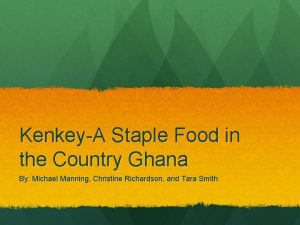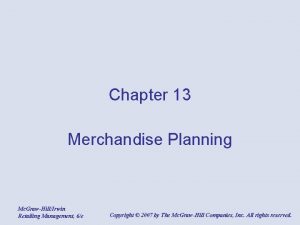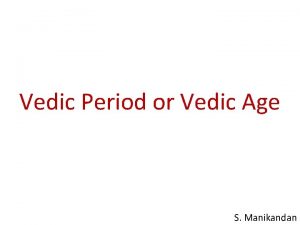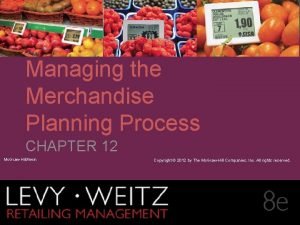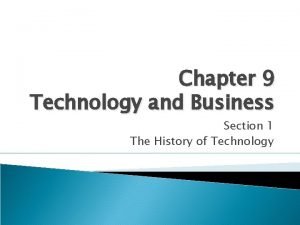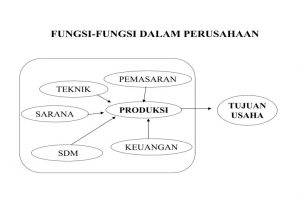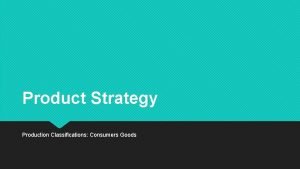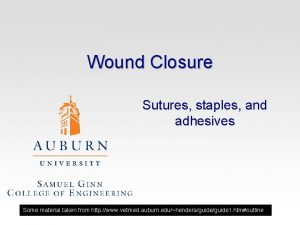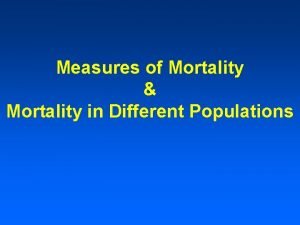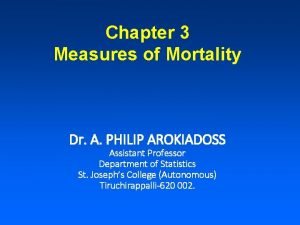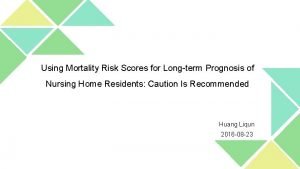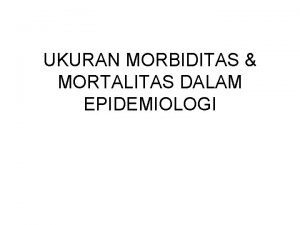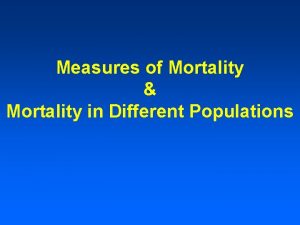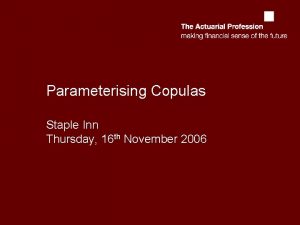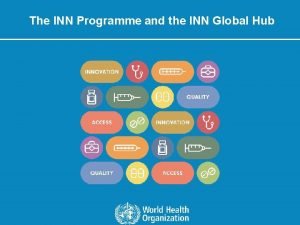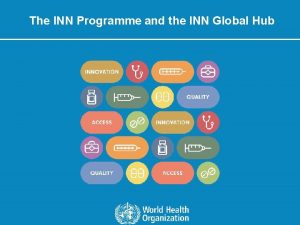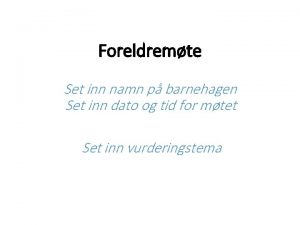Mortality Experts Meeting Staple Inn Hall 3 March



















- Slides: 19

Mortality Experts Meeting Staple Inn Hall 3 March 2008 Living Ever Longer? Tom Kirkwood Director, Institute for Ageing and Health Newcastle University


The Continuing Increase in Life Expectancy UN estimate 2000 UN estimate 1990 UN estimate 1980 Oeppen & Vaupel Science 2002 Declining early/mid-life mortality Declining later-life mortality

The Challenges for Mortality Research • Life is getting longer already – do we understand why? • What is the likelihood of further increases in life span? • What is likely to happen to age-related health, quality of life and capacity for independent living?

Key Questions about Ageing • Why does ageing occur? • Is there a limit to the human life span? • Do longer lives mean more diseases?

Progress Through the Stages of Life Then 20 Now 40 60 80 Age

DISPOSABLE SOMA THEORY Survival Protected Period of longevity assured by maintenance and repair Wild Age Kirkwood Nature 1977

The Ageing Process Kirkwood Cell 2005 Age-related Frailty, Disability, and Disease ANTI-INFLAMM. INFLAMMATION Accumulation of Cellular Defects GOOD LIFESTYLE GOOD FOOD Random Molecular Damage STRESS ENVIRONMENT BAD FOOD

Human Ageing is Malleable n By decreasing exposure to damage – Improved nutrition – Healthy lifestyle – Supportive environment n By enhancing natural mechanisms for protection and repair – Enhanced nutrition – Novel drugs, stem cell therapies, etc

Factors Influencing Longevity and Health Span n n n Genes Nutrition Lifestyle Environment Socioeconomic status Attitude Chance These factors and their interactions are being studied in the Newcastle 85+ Study; a 5 -year prospective study of biological, clinical and psychosocial factors associated with healthy ageing funded by MRC/BBSRC.

Genetic Heritability of Human Lifespan Cournil & Kirkwood Trends in Genetics 2001 Twin Studies • Mc. Gue et al (1993) • Herskind et al (1996) • Ljungquist et al (1998) 0. 22 0. 25 <0. 33 Traditional Family Studies • Philippe (1978) • Bocquet-Appel & Jakobi (1990) • Mayer (1990) • Gavrilova et al (1998) • Cournil et al (2000) 0 -0. 24 0. 10 -0. 30 0. 10 -0. 33 0. 18 -0. 58 0. 27 Genes account for 25% of what determines longevity

• High intakes of vegetables, fruits and cereals. • Moderate to high intake of fish. • Low intake of meat. • Low intake of saturated fatty acids. • High intake of monounsaturated fatty acids (olive oil). • Low to moderate intake of dairy products, principally cheese and yoghurt. • Modest intake of alcohol (mostly wine).

EPIC-elderly Study Protocol 76, 707 men and women aged 60+ No CHD, stroke or cancer at enrolment Median follow up 89 months (4047 deaths) Adherence to Mediterranean diet assessed on 10 -point scale: 0 (poor)… 9 (high) 2 unit increment results in 8% reduction of overall mortality Trichopoulou A et al. (2005) BMJ 330, 991 -997

Do longer lives mean more diseases? n For many important diseases, age is the largest single ‘risk factor’. n Understanding why aged cells and organs are more vulnerable to pathology will open new paths to prevention and cure. n At present, we have many medical research institutes but very few of these include research on the science of intrinsic ageing. The coming decades are likely to see greatly expanded research on the mechanisms underpinning both normal ageing and age-related diseases.

Pathways to Age-Related Disease B Disease A Disease C ‘Upstream’ ‘Downstream’

Targeting for Healthy Ageing Population numbers Target Population for Nutrition/Lifestyle Future Now Target Population for Drugs, etc Healthy Unhealthy condition Adapted from: Green and van der Ouderaa Nature Pharmacogenomics 2003

Beating the Biological Clock Biological ‘Wrong’ lifestyle • Excess calorie intake Ageing • High saturated fats • Low micro-nutrients • Too little exercise • Poor glucose tolerance • Stress • Smoking ‘Right’ lifestyle • Energy balance • Maintain glucose sensitivity • Low saturated fats • Rich micro-nutrient diet • High exercise level • Low to moderate stress Chronological Ageing

“If I’d known I was going to live this long, I’d have taken better care of myself” US comedian Eubie Blake on his 100 th birthday

Today and Beyond Understanding the future of mortality patterns calls for an multi-disciplinary approaches. Other disciplines have much to learn from the actuarial profession, and vice versa. How to take forward the building of further bridges?
 March march dabrowski
March march dabrowski Where is ghana
Where is ghana Flow of staple merchandise
Flow of staple merchandise The vedic age lasted roughly from
The vedic age lasted roughly from Starchy staples
Starchy staples Merchandise management process
Merchandise management process Staple adjective
Staple adjective Stapler simple machine
Stapler simple machine Temukan bahan serat yang terdapat di lingkungan sekitarmu
Temukan bahan serat yang terdapat di lingkungan sekitarmu Chapter 9 technology and business
Chapter 9 technology and business Impulse convenience goods
Impulse convenience goods Focal point fingerprint
Focal point fingerprint Consumer products classifications
Consumer products classifications Staple gun for wounds
Staple gun for wounds Neonatal mortality rate formula
Neonatal mortality rate formula Infant mortality rate formula
Infant mortality rate formula Age adjusted mortality rate definition
Age adjusted mortality rate definition Theme of death in the great gatsby
Theme of death in the great gatsby Flacker score
Flacker score Mortality vs morbidity
Mortality vs morbidity

